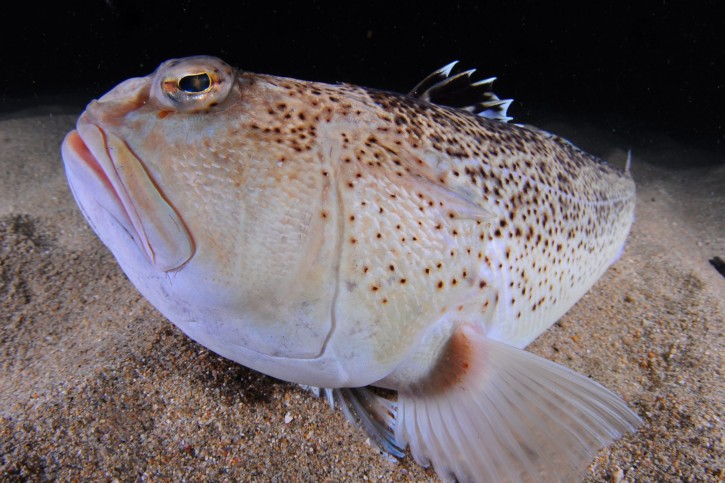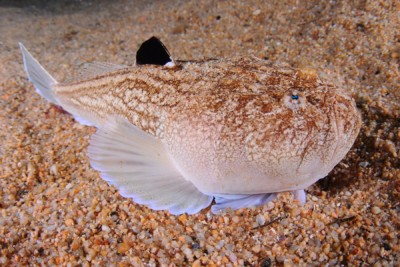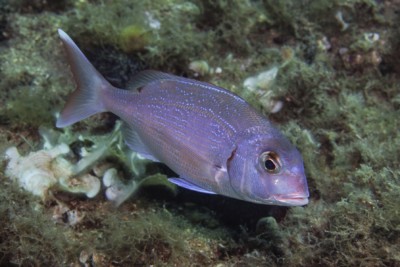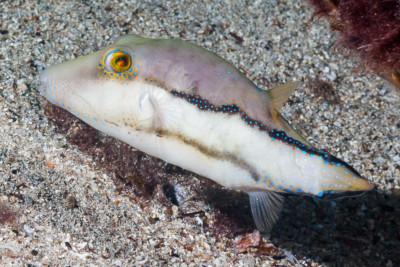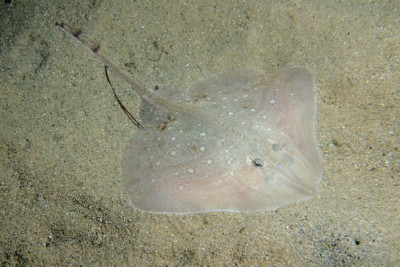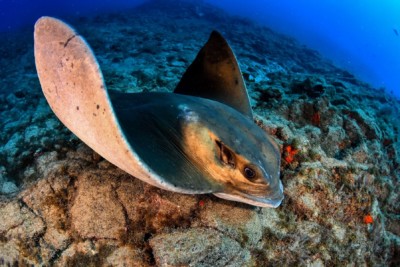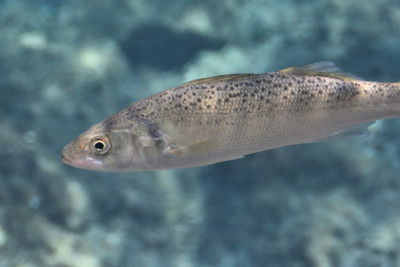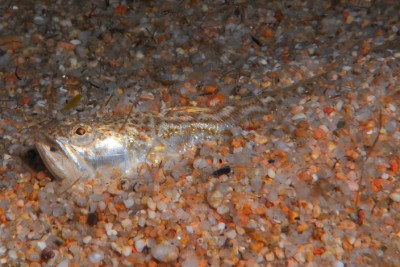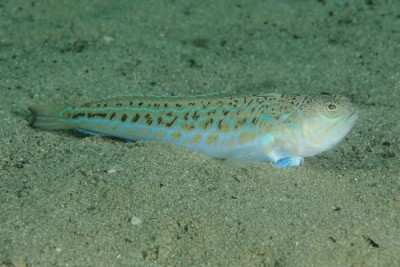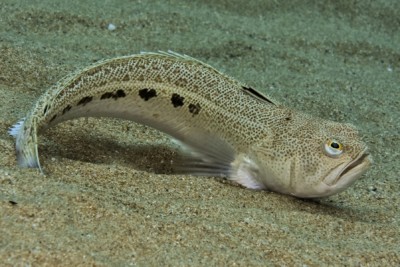starry weever
| Scientific name | Trachinus radiatus |
|---|---|
| Descriptor | Cuvier |
| Year of description | 1829 |
| IUCN category (World) | LC |
| Family | Trachinidae |
| Genus | Trachinus |
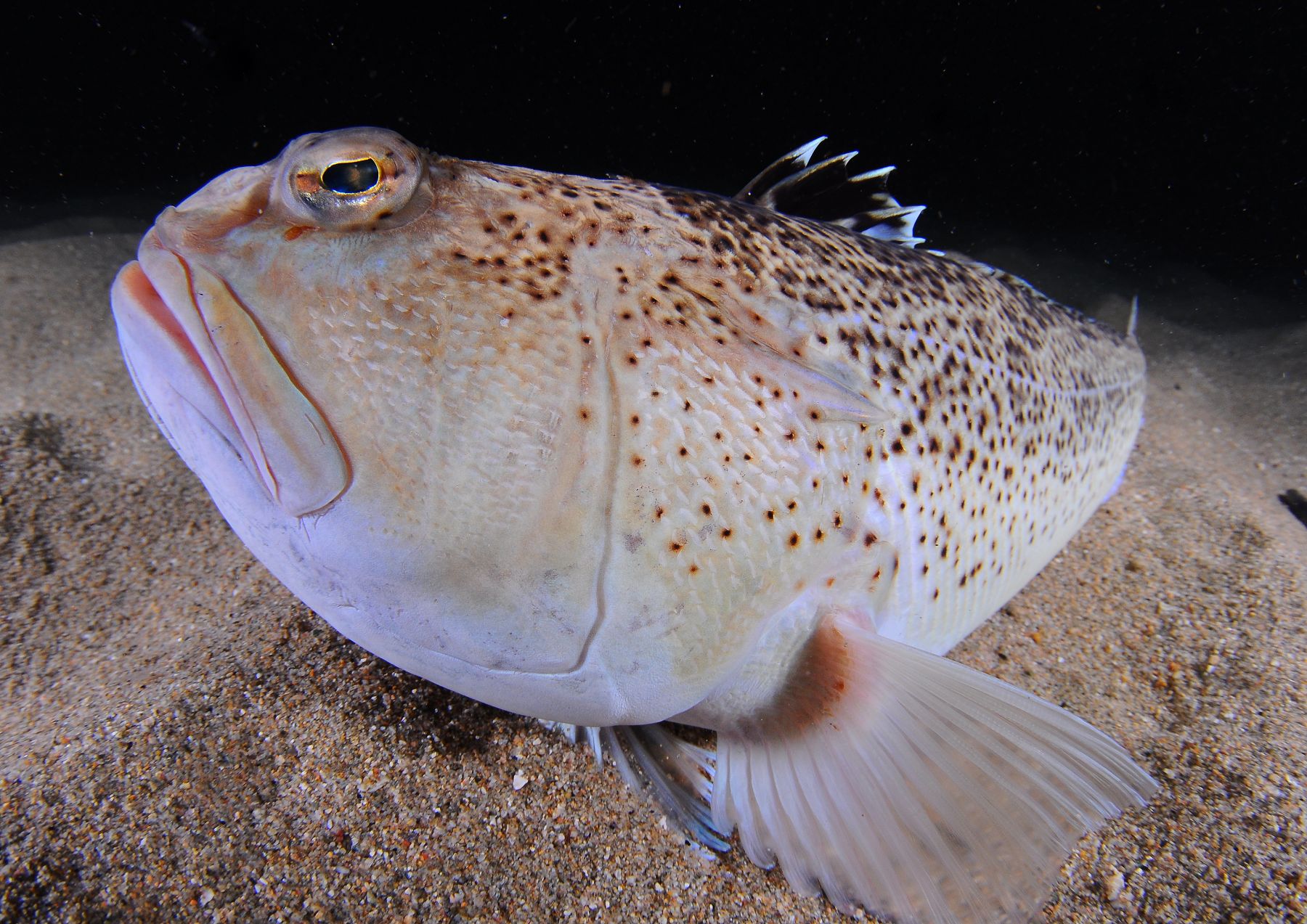

Introduction
The starry weever is a venomous fish found on the eastern coast of the Atlantic Ocean, in the Mediterranean Sea, and the Black Sea. Although potentially dangerous, incidents are rare as the species only seems to sting in extreme danger. Furthermore, it is more common between 30 and 60 meters deep, which limits interactions with swimmers and coastal fishermen.
Who is it?
Morphology
-
Average size30 cm
-
Maximum size50 cm
-
Mimicrysand
-
Patternponctuations
-
Average size30 cm
-
Maximum size50 cm
-
Mimicrysand
-
Patternponctuations
How to recognize This fish ?
As its name suggests, the coloration resembles that of leopards. The body is beige with brown vermiculations. As we approach the head, we can see darker, often incomplete spots. The belly is almost white and devoid of spots. Depending on the population, the head is beige or darker, sometimes with purple or reddish reflections.
Like its relatives, the body is flattened along its length. A venomous spine is present at the operculum, six venomous spine rays are present on the first anal fin. The latter is darker, sometimes black.
Sexual dimorphism
Males and females are difficult to distinguish. The largest individuals are mainly females.
Behaviour & Life cycle
-
dietcarnivorous
-
Sociabilitysolitary
-
territorialYes
-
Way of livingdiurnal
The starry weever is a solitary predator that spends its days buried in the sand. When a prey passes by, it is capable of making rapid leaps to surprise and swallow them.
Its growth is faster than that of the greater weever (T. draco).
Reproduction
-
Reproductionovipare qui pond en eau libre
The species is poorly studied. It seems to reproduce between late spring and late summer in the Mediterranean Sea.
Females reach maturity between 2 and 4 years old.
Risks for humans
-
VenomousYes
This species is venomous and can cause serious accidents upon contact. However, accidents are rare as this shy species avoids contact. When faced with danger, it tends to stay buried in the sand and avoid using its lateral venomous spine.
What to do in the event of a sting?
in case of sting, the following rules should be followed, in this order:
- Isolate the victim from the danger and quickly remove him or her from the water
- Call for help
- Lay the victim down in a half-sitting position and avoid any effort
- Immobilize the affected limb
- Clean the wound
- The venom of this species being thermolabile, it can be neutralized if it is submitted to a temperature of about 45 °C. It is therefore possible to heat the wound. This popular technique should be practiced with great care so as not to aggravate the wound by burning it. It is advisable to immerse the affected limb in hot water.
- If the puncture is too deep, heating the wound will be less effective.
Sometimes the sting can cause discomfort or even loss of consciousness in the victim. The stings are usually very painful.
Origin and distribution

Conservation status of populations (IUCN)
What is its habitat?
Natural environment characteristics
-
Depth30 - 60 m
Biotope presentation
The starry weever is more common between 30 and 60 meters deep, but can be found from the surface in the southern Mediterranean. It is recorded as deep as 150 meters.
Species of the same biotope
To go further
Sources & Contributions
Participation & Validation
The Fishipedia team and specialist contributors are committed to providing high-quality content. However, although the information comes from scientific sources or testimonials from specialists, the cards may contain inaccuracies.

Benoit Chartrer

Julie Magnus
Translation
Translation done with the valuable contribution of our translators, who make this information available to a wider audience. We sincerely thank them for their commitment.
Bibliographic references
Age, growth and mortality of the starry weever Trachinus radiatus Cuvier, 1829 in the Tunisian waters - Oussama HAMED - Jean Louis DUFOUR - Nadia CHAKROUN-MARZOUK - Kélig MAHE - - 2019.
Scientific partners
Tags
#Trachinidae
#Trachinus
#fonds sablonneux
#zones côtières troubles
#zones d'algues et de détritus végétaux
#Mediterranean Sea
#Black Sea
#Océan Atlantique Est Afrique - Golfe de guinée
#Temperate Eastern Atlantic Ocean
#Océan Atlantique Est Afrique - Transition & Cap Vert
#Eastern tropical Atlantic Ocean
#Corsica
#Canary Islands
#Sardinia
#Sicily
Species of the same family
Same genus
Species of the same biotope
